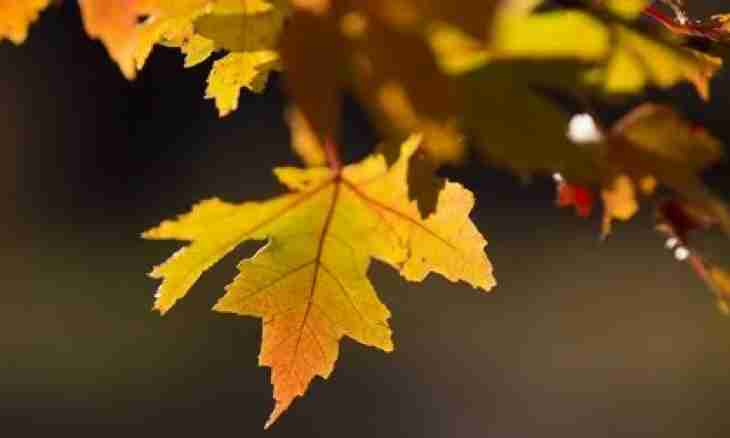Water evaporation, gas exchange and photosynthesis – these three main functions are performed by the leaf of a plant which is a part of escape. In the course of photosynthesis under the influence of quanta of light, organic matter from inorganic is formed that does possible plant life, accumulation of biomass on the planet and natural circulation of chemical elements.
Instruction
1. Leaves can differ strongly from each other, but all of them have common features. The majority of leaves consists of a scape and a sheet plate (they are called petiolar), but there are also sedentary leaves which do not have a scape and attached to a stalk directly the plate basis. Sometimes near the basis stipules develop.
2. Leaves are simple and difficult (consisting of one or several sheet plates respectively), different in a form, can have various edges. They observe zhilkovaniye types, characteristic of each plant species: parallel, arc, mesh, plumose palchatoye. Veins consist of the carrying-out bunches, give to a leaf durability and carry out solutions of nutrients.
3. From above and from below sheet plates are covered with a thin and transparent skin from integumentary fabric. On it the great number of the ustyitsa presented by an ustyichny crack and the closing cages is located. Through these openings there is an evaporation of water and gas exchange.
4. Leaf pulp under a thin skin consists of the main fabric. Two-three layers are formed by column fabric in which especially there are a lot of chlorolayers, and the further space is presented by spongy fabric with the large and frequent mezhkletnik filled with air.
5. The leaf sizes, its form and the building are connected with living conditions of a vegetable organism. In damp places leaves of plants usually large also have a large number of ustyitsa whereas in droughty – small by the sizes and, as a rule, have special devices for evaporation reduction. Treat such devices: wax raid, small quantity of ustyitsa, "compact" form of a leaf (prickle), etc. At the aloe and an agave called succulents, water stocks up in soft and juicy leaves.
6. For adaptation to environmental conditions the leaves of some plants changed, having got functions, not specific to leaves. So, prickles of barberries and cacti not only reduce evaporation and promote moisture preservation, but also protect a plant from intensive eating by animals. Short moustaches of peas support a stalk in vertical position.
7. Leaves of predatory insectivorous plants, such as rosyanka, are adapted for catching and digestion of small insects. Hairs on sheet plates excrete the special sticky liquid attracting insects with the gloss. Having sat down on a leaf, animals uvyazat in it, and then hairs and a plate, being bent, cover the caught victim. After that the plant digests and soaks up tissues of an insect that allows to compensate a lack of nitrogen of the soil (for example, on peat bogs where the rosyanka grows).
8. At many semidesertic plants to which the feather grass belongs, for example, of ustiyets lie on a top side of a leaf, and at a lack of moisture the leaf is displaced in a tubule. Concentration of water vapor increases in the formed cavity in the tube isolated from dry air thanks to what evaporation decreases.

